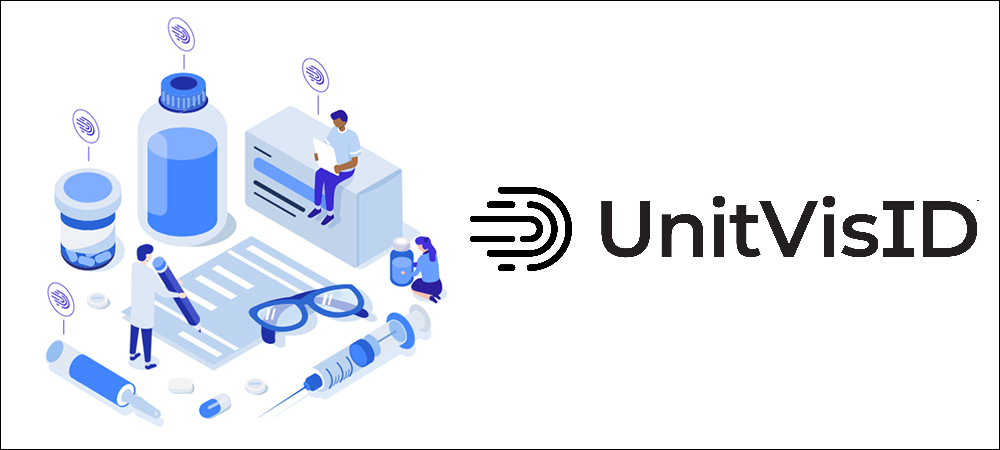RFID Journal LIVE! 2023 will feature end-user companies discussing RFID’s use in healthcare and pharmaceuticals, as well as exhibitors offering tagging solutions for those industries. To learn more, visit the event’s website.
- Bringing More Hospitals to the Table
- Pilots to Read and Benefit from RFID-Tagged Drugs
- BayCare Health Systems Leverages RFID Experience
With the start of the New Year, the tagging of pharmaceutical products via radio frequency identification (RFID) technology is ramping up. Several standards organizations are creating guidelines for RFID tag encoding, performance and data management, in order to make them more universally useable by pharmacies, logistics firms and hospitals.
UnitVisID Alliance is the new name created in November 2022 for the DoseID Consortium (see New Consortium Focuses on RFID Adoption in Healthcare and Consortium Aims to Standardize RFID for Pharmaceuticals) as the group grows in membership and hopes to reflect a larger ecosystem of pharmaceutical management with RFID. The organization is taking on new memberships and reports a notable increase in healthcare providers joining its ranks. At the same time, the name change reflects the full use case for RFID management of pharmaceuticals throughout the supply chain, from manufacturing to patient use.

“The interoperable approach offered by UnitVisID allows for much more than product identification for unit-of-use medications,” says Tim Kress-Spatz, the UnitVisID Alliance’s president. The DoseID Consortium was launched by Sandoz, Omnicell, CCL, Nephron, Hikma and RFID technology provider Kit Check. Kress-Spatz co-founded the latter company, which was rebranded as medication intelligence firm Bluesight. The Consortium serves as a certification body for tags in the pharmaceutical market. ARC, with input from Bluesight, developed the Spec S performance guideline for the use of RFID products around pharmaceuticals, and UnitVisID says it hopes to work with ARC to continue evolving this specification.
Attention is increasingly turning to RFID by drug companies and those that administer the drugs. At present, according to Kress-Spatz, the UnitVisID standard is used by more than 1,000 hospitals and healthcare organizations. He says more than 210 million RFID-tagged products have been scanned to date using Kit Check’s technology and the UnitVisID standard.
“We’ve realized the many benefits of RFID in healthcare,” Kress-Spatz says, “and its massive adoption is a testament that we are now at a tipping point.” Among the UnitVisID Alliance’s members is Les Louden, the pharmacy manager at St. Joseph’s Hospital, BayCare Health System, in Tampa, Fla., which has been tagging medications and supplies via RFID and reading those tags since 2014.
Bringing More Hospitals to the Table
The organization has been adding new members in recent months, including BayCare Health System. “We started with a lot of industry members, but recently we’ve been making pretty good strides with getting hospital members on board,” Kress-Spatz says, “and just generally seeing this ecosystem flourish.” Following a period of organizing the group and its subcommittees, he adds, “We’re fully up and running. We’re able to function in a healthy way, and so we were able to start turning our attention more to the mission and the vision.” Hospital membership is one thing that differentiates the organization from others, he says.

Tim Kress-Spatz
There are other standards groups that aid the pharmaceutical industry and its RFID technology use, including GS1 US and the RAIN Alliance, and standardization efforts overlap among the groups. GS1 offers guidelines for the use of EPC UHF RFID for consumer products, including drugs. Its TDS 2.0 standard, released in 2022 (see GS1 Announces Tag Data Standard Version 2.0 and Standards Group Provides RFID Guidelines for Food Services), specifies data carried on EPC-encoded UHF RFID tags and allows for cheaper and higher-performance inlays to capture and store expiration dates and lot numbers. The RAIN Alliance also provides guidelines related to UHF RFID technology (branded as RAIN) for healthcare applications.
The UnitVisID Alliance serves as a more pharmaceutical- and end-user-focused organization, Kress-Spatz notes. “A lot of these other groups are largely [composed] of industry,” he explains, “and they’re solving problems for supply chains. In this case, the voice of that end user is really meaningful.” For that reason, he adds, “We think it’s crucial to have them at the table.” Many of the healthcare company members will now play a role in the development of standards going forward.
The UnitVisID Alliance comprises three main committees: technology, certifications and marketing, the last of which includes a use-cases working group. The third committee is where the organization expects hospital members to have the greatest impact, for it is there that they can provide a better understanding of workflows and use cases around patient safety and efficiency. More hospitals are expected to join this year, Kress-Spatz predicts. “Now that we’ve got a bunch more hospitals coming on board,” he states, “it feels like that’s starting to speed up.”
Pilots Underway to Read and Benefit from RFID-Tagged Drugs
In addition to hospitals, the organization is signing up a growing number of pharmaceutical manufacturers that know RFID technology will be part of their future, if they are not already tagging their products. Piloting will help some of these businesses better understand which standards best ensure that a tag used by a pharmaceutical company can be read reliably.

Les Louden
That means high performance, whether the tag is interrogated on a manufacturing line, in a controlled environment or at a hospital, when it may be read from a crowded kit of several hundred tagged medications in an operating room cabinet. “So it’s more than just ‘How do we get the GTIN [global trade item number] into the tag memory?'” Kress-Spatz says. “It’s like ‘How do we actually make this work in a practical sense for the end user?'” Most pilots currently underway are being led by pharmaceutical companies, while hospitals are beginning to take part as well.
Other challenges remain ahead, Kress-Spatz reports, including determining who will pay the cost of the RFID technology used across a supply chain. Hospitals have indicated a desire for any technology fees to be bundled into a drug’s price, while pharmaceutical manufacturers and other constituents are leery of any additional cost for medications. Benefits for drug manufacturers may ameliorate some of that cost, however, the Alliance speculates.
Pharmacies dealing with staff shortages, recalled drugs and supply chain issues are likely to gain from the automatic data the RFID tags can provide. “It’s an opportunity,” Kress-Spatz states. “The more widely that we can get this implemented and out there in the marketplace, the greater the impact it will have on reducing the pharmacies’ burdens, making things safer and cheaper for patients.”
BayCare Health Systems Leverages RFID Experience
As one of the recent new healthcare members to the UnitVisID Alliance, BayCare Health System’s Louden joined the organizations in November 2022 as an individual member. Both before and since that time, he says, “I have witnessed the accelerated pace at which RFID technology has been adopted across the healthcare sector, particularly the pharmaceutical industry.”
For that reason, Louden seeks a role in standards development. “It’s important, during a time of great innovation and advancement, that health systems can rely on a united approach toward the promotion and adoption of RFID technologies,” he says. “My goal for BayCare is to incorporate RFID-tagged products to best eliminate manual processes to ultimately streamline workflows across the supply chain and medication use systems.”
The leveraging of data continues to play a crucial role in streamlining operations for hospitals, Louden reports, predicting that RFID use will enable a healthcare system that includes “more comprehensive, robust data to improve decision-making, inventory modifications and waste reduction.” As part of the UnitVisID Alliance, he hopes to provide insights into the current gaps in the medication supply chain and inventory processes that have been particularly challenging for hospital administrators.
Key Takeaways:
- Hospitals are joining pharmaceutical companies and technology vendors in an effort to standardize UHF RFID use for tracking drugs.
- With more end users participating in the UnitVisID Alliance, the group expects to offer guidance that assures proper attributes and benefits of the technology for all who make, transport or receive the products.

